Why Teach Solfege?
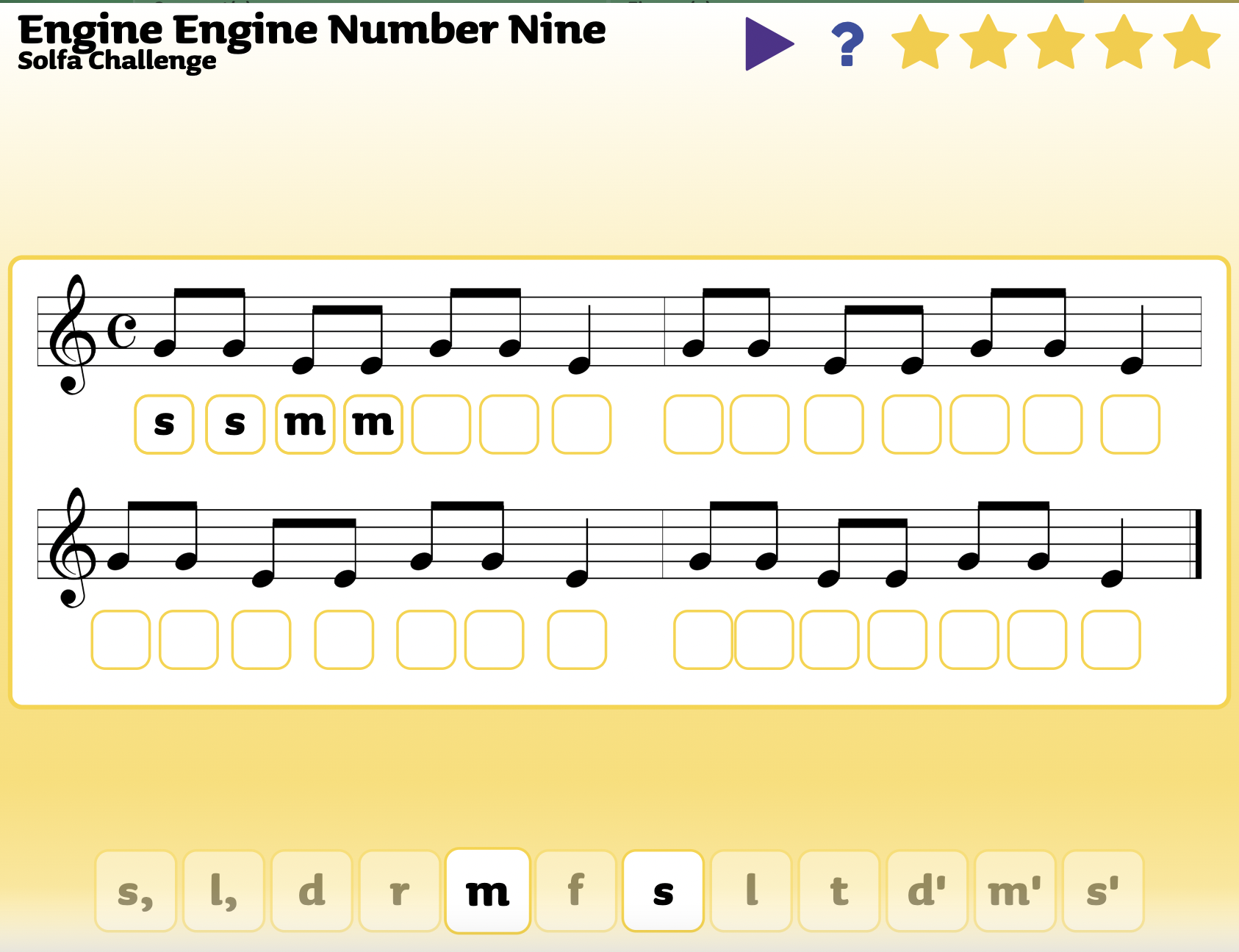
A teacher in the Musicplay Teachers Group on Facebook asked what I thought was a great question. Why teach solfege?
If you’ve taught K-1 to read, you use two approaches - phonics and whole language. Solfege is like the “phonics” of music - in phonics you teach children the sounds of the letters. In solfege, you learn to hear relationships between the pitches in the scale.
Using letter names in music is like whole language - you learn the letter names and learn that when you see a B, you cover the top hole of the recorder.
Both note naming systems are useful - just like kids use both phonics and whole language to learn to decode language, kids who use both solfege and pitch letter names are better able to decode music.
I know that not every music teacher uses solfege, but I really see the value of it. I used to create charts of reading songs (Engine Engine, Lucy Locket) and it was exciting for me and for the kids when they could decode the song. I’d gush all over them - “You sang that song without me having to sing it first! You figured it out!!! That’s sight-singing, and that’s something that a lot of adults can’t do.”
Here's What I do through the grades:
PreK:
- Sing melody patterns and have children echo. I don't use solfa, but sing many simple patterns, often using Bobo. I'll sing patterns in books like Brown Bear and Mortimer. I'll show with arm motions, a parachute or stretchy band how the sounds go higher and lower.
Kindergarten:
- Lots more singing melody patterns, but I'll start singing so-mi and have kids echo. I may use iconic notation, usually just showing higher and lower sounds. Some years, I might label so and mi. This is largely dependent on the class - some take all year to really understand what high and low are. I won't label until they can show me with arm motions how the notes go higher and lower. One trick I use is to have them sing a so-mi song with their eyes closed and show the higher and lower sounds with arm motions. If they are accurate on their own, they are ready to label.
Grade 1:
- Lots more singing melody patterns, but now I'll consistently use solfa in the melody patterns. I want 1st grade to be able to sight sing so-mi patterns by the end of the year. Depending on the class, I'll add la, and in a really good year, do.
Grade 2:
- Review all the patterns learned in 1st grade - and if kids have come from another school, you may need to repeat the entire process. I always use sound before symbol. I teach the singing game, then have students show how the notes go with arm motions. Then, we place icons on a 1 or 2 line staff, finally teach the placement on the 5 line staff. New melodic patterns in Grade 2 include do-re-mi and do-re-mi- so-la
Grade 3:
- Review all the patterns learned in 2nd grade - and if kids have come from another school, you may need to repeat the entire process. New patterns in Gr.3 include high do, low la, low so
Grade 4:
- Review all the patterns learned in 3rd grade - and if kids have come from another school, you may need to repeat the entire process. New patterns in Gr.4 fa and ti.
In 4th grade, I introduce pitch letter names early in the school year, and practice them until January when I start recorder. I try to keep the kids singing the solfa notes as well as singing letter names. I explain solfa is most often used by singers and pitch letter names are used for instruments.
Grade 5:
- Review all the patterns learned in 4th grade - and try to continue using both solfa and pitch names.
How do you find the solfa supports?
1. Go to the song list and select a grade.
You'll see the tone sets of the songs listed. m s stands for mi-so. We're trying to rename all the solfa tone sets on the site so that the tone set begins with the lowest note.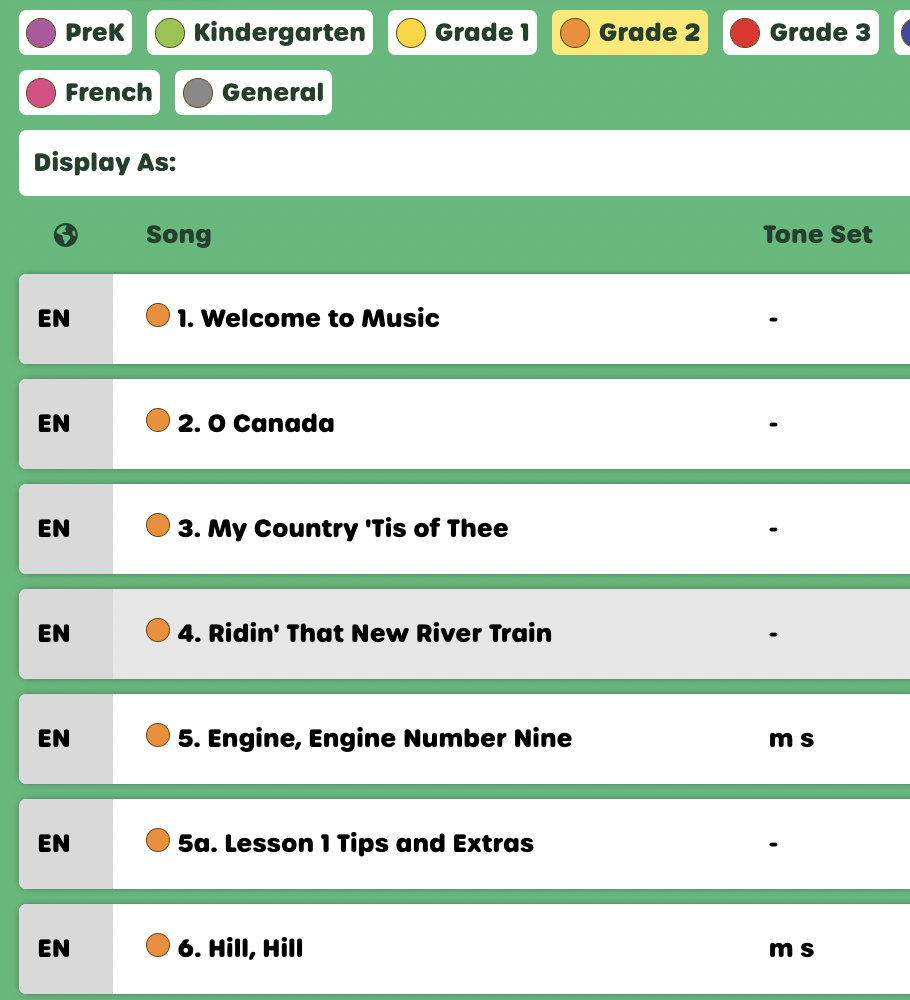
2. Then open a song.
Engine Engine has song videos in the top row: notation, lyrics, kids demo and note highlights.
- Concept Slides are in the upper left of the square.
- Interactives are in the upper right of the square - this is where you'll find the solfa challenge and a tone ladder.
- Arrangements are in the bottom left of the square.
- Printables are in the bottom right of the square.
Teacher Tools include song activities:
- Notation
- Game directions
- Creating/playing ideas
- I Can statements
- Assessment suggestions
- Lyrics are here as well
At the bottom of the song page is the Accompaniment track to download if needed.
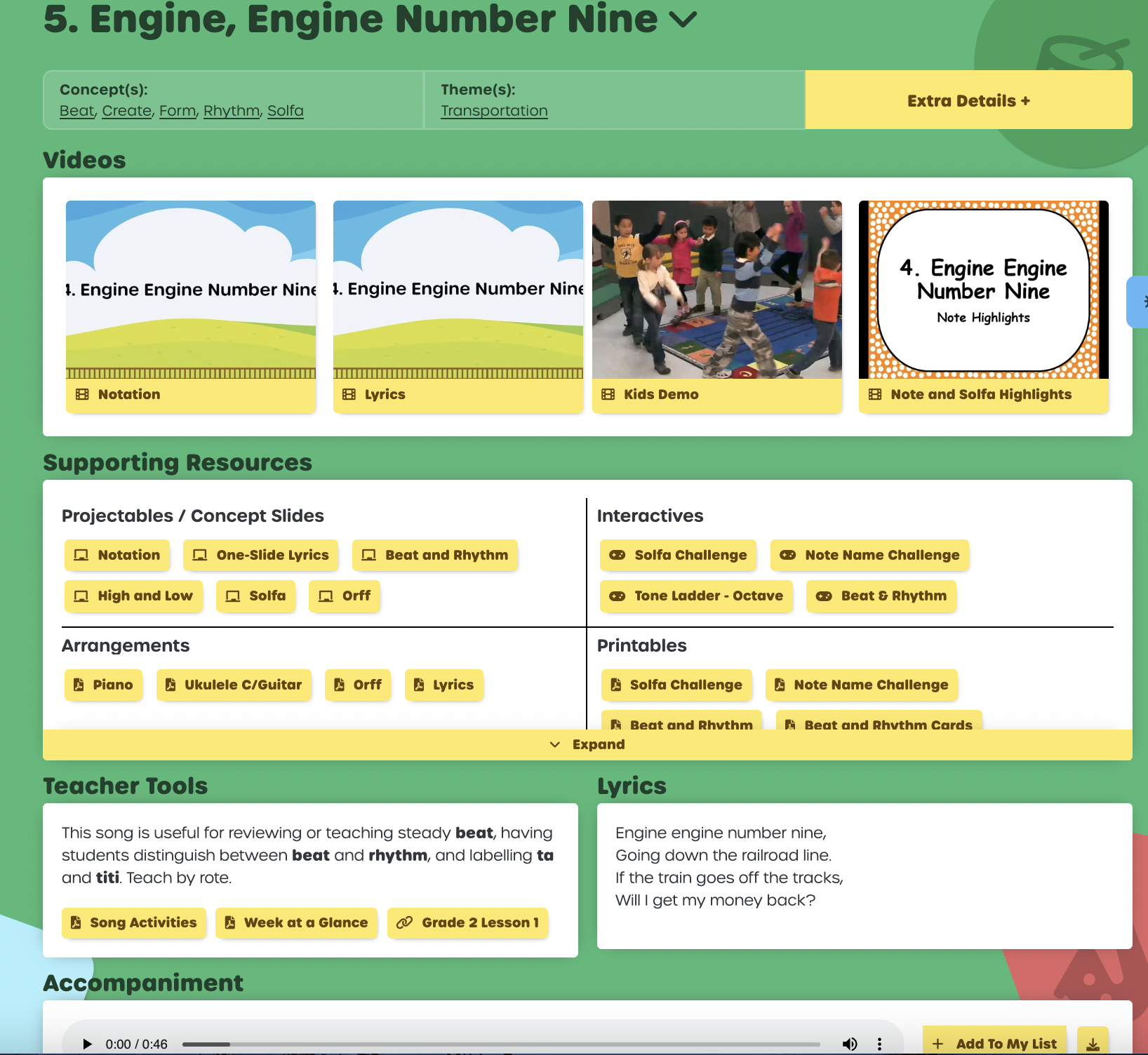
Kindergarten - prepare solfa interactive for the following songs:
18. Gingerbread Man
23. Hey Hey
37. Pumpkin Fat
50. Teddy Bear
Prepare Solfa activities include
1. Sing the song
2. Animated – show how the notes go higher and lower
3. Trace how the notes go higher and lower
4. Song Sort – Which pattern fits which words?

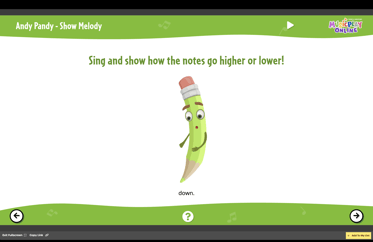

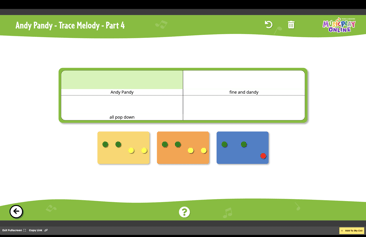
Concept Slides explain how solfa notes are named - these are in many of the early reading songs.
Look for SOLFA in the concept slides for any reading song. (open the song)
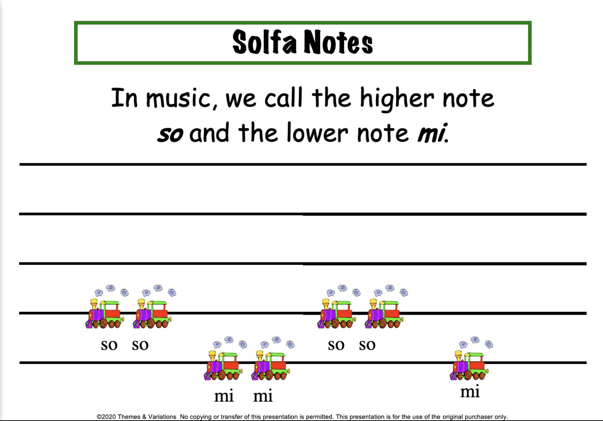
Teaching Notes for those teachers who haven't taken Kodaly training - and if you haven't, try to do the Levels courses!
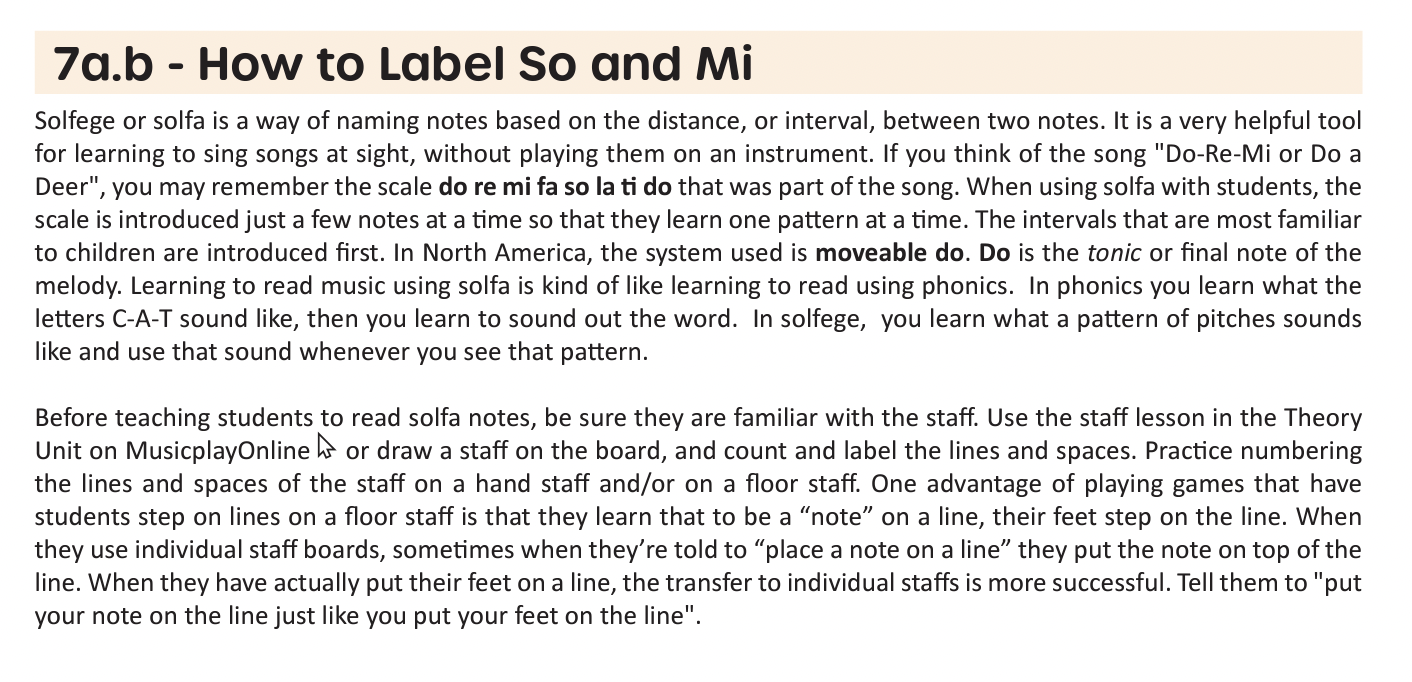
Interactive Tone Ladder - click on a note to "hide" it
- you can have kids sing the whole scale do-re-mi-fa-so-la-ti-do
- then isolate the pattern - kids will learn that the pattern is just a part of the scale
When you open a reading song, this will be in the interactives.
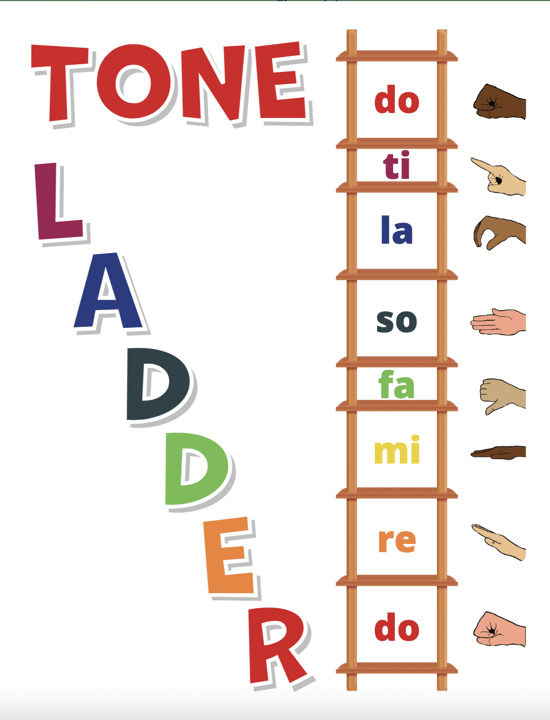
Printable tone ladders and hand sign posters are found in Solfa Practice - Prepare Solfa section
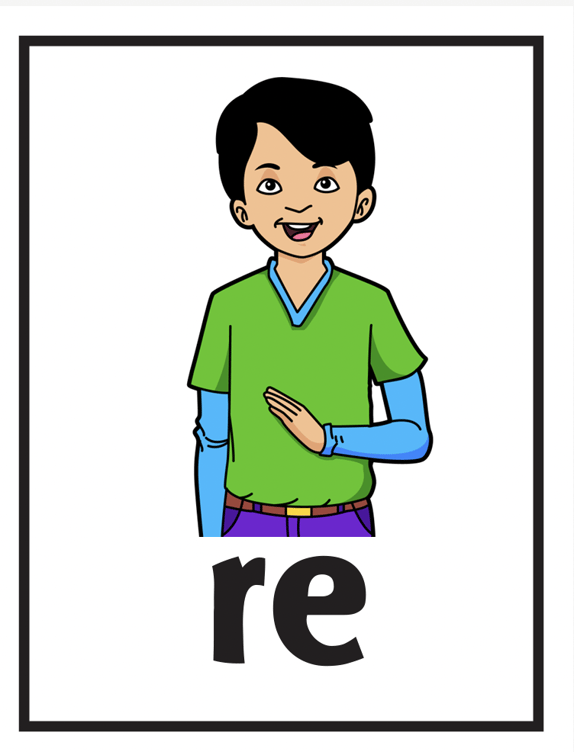
Note Highlights videos for ALL reading songs.
The highlight videos sing through the lyrics first, then the solfa.
These are found in the videos for reading songs. Open Engine #9 and it will be in the video list.
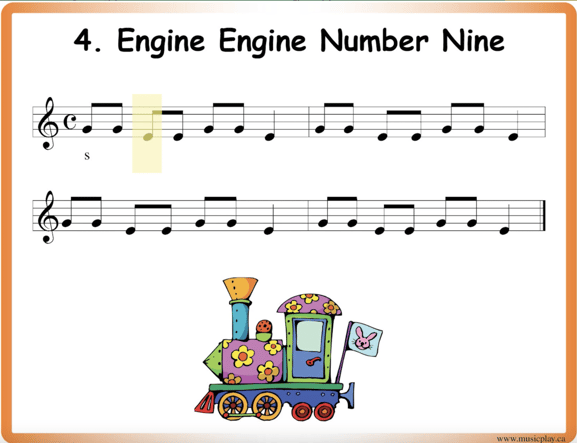
Solfa Challenge for all reading songs.
When you open a reading song, this will be in the interactives.
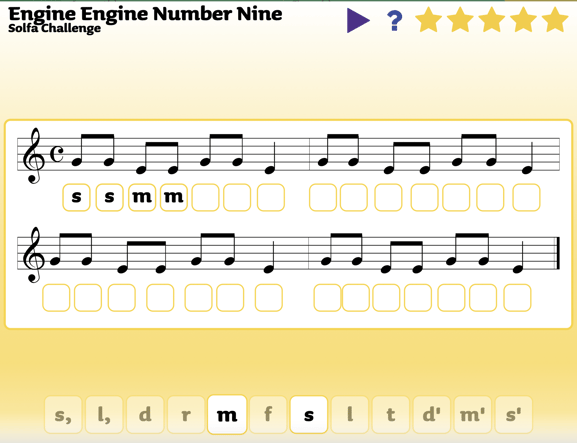
Echo Solfa with Mjaa - includes so-mi in key of C, F - then in mixed keys.
This is found in the Solfa Practice section. (left menu)
Choose the tone set - all tone sets have them, and 4 more are coming!
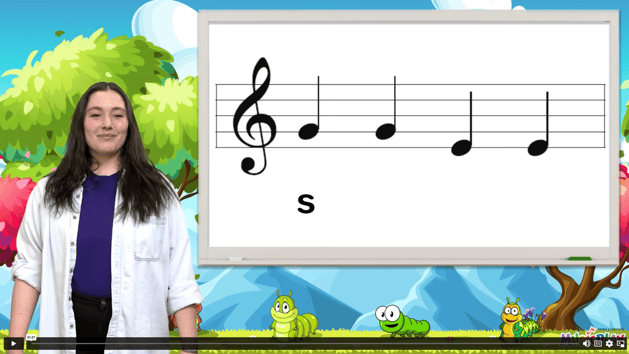
Solfa Practice Section:
Each of the echo videos is given without accompaniment, then with. Mjaa (pronounced Maya) sings and models beautifully!
11 tone sets are now recorded! (8 are on the site, but additional tone sets are coming soon! low la-so, fa, ti, )
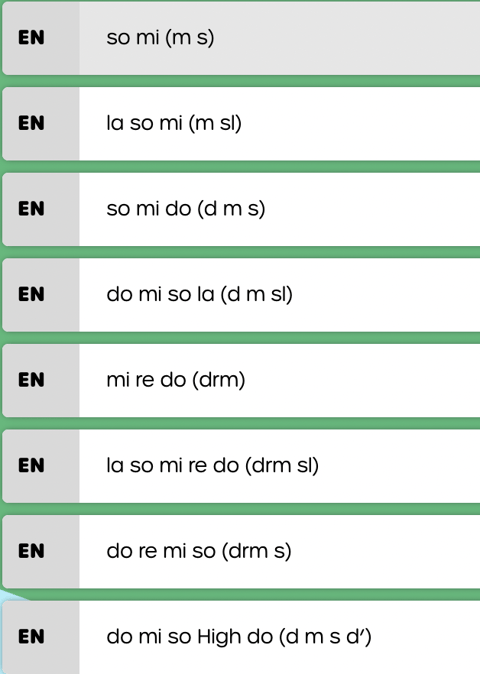
Echo Solfa with talking Pets! in so-mi in key of C, F - then mixed keys.
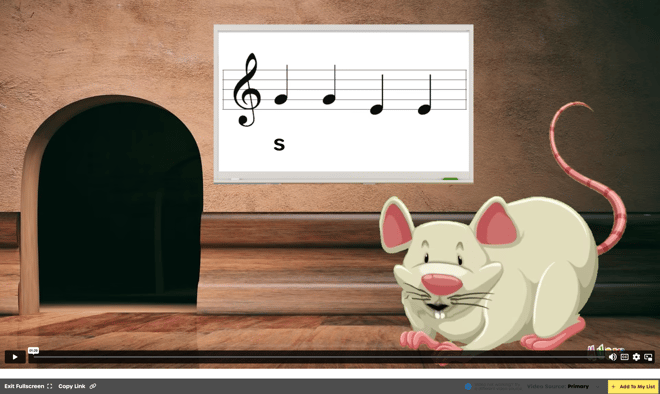
There are worksheets in the printables section. (updated versions are in development)
When you open a reading song, this will be in the printables.
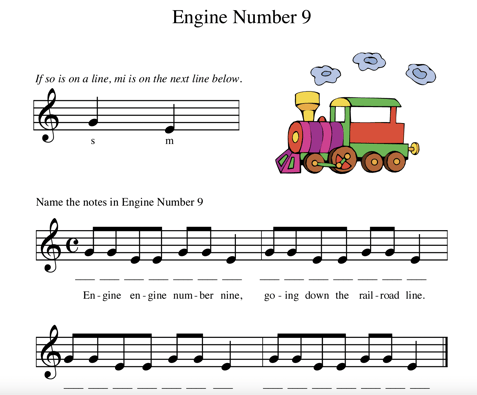
The Melody Playback game is found in the Solfa Practice section - great ear training game!
There are Melody Playback games for the first 6 levels.
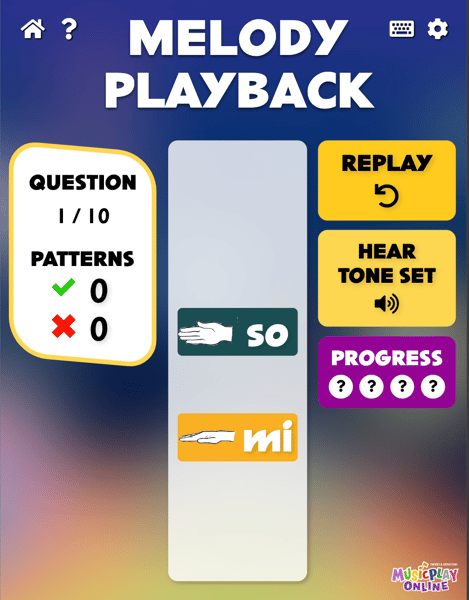
Poison Melody is a student favorite! If you haven't tried this yet - try it!
In the Solfa Practice section. (left menu)
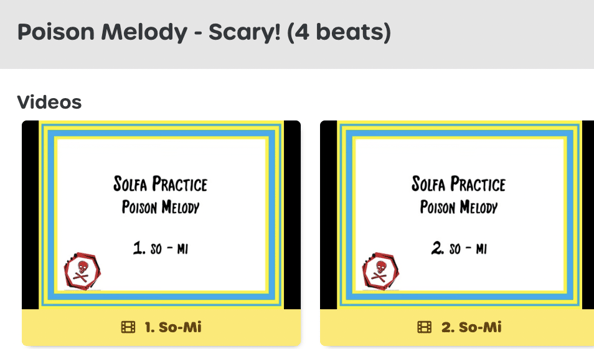
Listen to a pattern and sing the pattern back in solfa.
In the Solfa Practice section. (left menu)
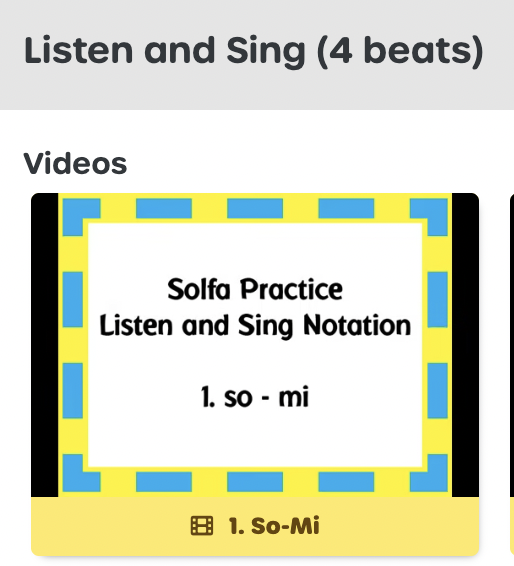
Dictation Assessment
This is Melodic Dictation - students hear a pattern and write down what they heard.
If they hear so so so mi, they'd write s s s m
As we add the new sections completing the tone sets, we will be creating slide show reading assessments and creating pdfs to assess solfa.
In the Solfa Practice section. (left menu)

The So-me story books were written by Stuart Manins, a New Zealand music educator.
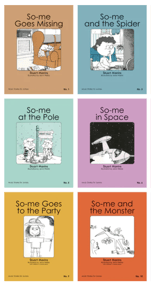
My students in Grade 2-3 loved Sol-me and the Dance. After listening to the story, I did a melodic assessment that used La-so-mi La-so-mi --- the character who is in this story. And because the song they sang was so silly, every child in 2nd and 3rd grade aced the assessment.
The song goes: La-so-mi La-so-mi, She dances like Salome. I think they all thought it was salami, but they learned to recognize la so and mi.
